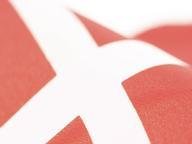Quiz Answer Key and Fun Facts
1. Which Danish King was originally named 'Bogislaw'?
2. Which Danish King introduced Christianity to Denmark
3. Which Danish King created created a set of Danish laws?
4. Which Danish King was suspected of orchestrating the murder of his brother?
5. Which Danish King was made a saint?
6. Which Danish King was the last Danish monarch in over 800 years to VOLUNTARILY abdicate?
7. Which Danish King was murdered in a barn in Finderup?
8. Which Danish King reunified Denmark after it had been mortgaged out in parcels?
9. Which Danish King Ruled the North Sea Empire?
10. Which Danish King emerged victoriously from the Civil Wars of 1146-1157?
Source: Author
RedheadDane
This quiz was reviewed by FunTrivia editor
ponycargirl before going online.
Any errors found in FunTrivia content are routinely corrected through our feedback system.
